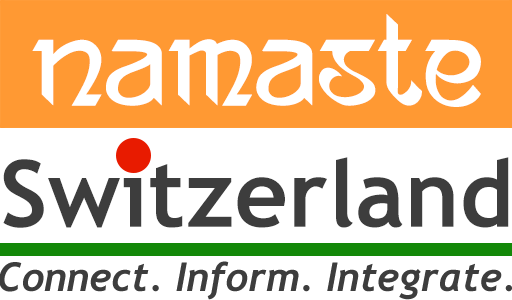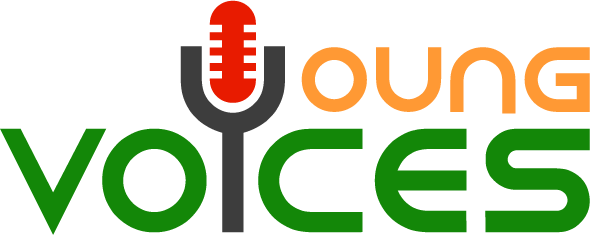Aradhna Sethi explores the post-primary options available here that make the Swiss system tick differently.
Aptitude is key to finding a profession. Whether your child is a practical, hands-on individual, waiting to fly out of the cocoon and enter the workforce to get a foot into financial independence, or one who is intellectually geared towards theoretical knowledge as a step towards the career of his or her choice, or is a bit of both – the Swiss system ensures there is something for everyone.
As mentioned in Part 1 of the Education series, “A, B, C of the Swiss Education System”, primary school ends with grade 6. After this, your child would either clear the entrance exam for “Lang-Gymnasium” or enter the secondary school to continue through grade 7,8 and 9; thus concluding his/ her nine years of obligatory education.
Most young adults in Switzerland choose the secondary school option – which leads to the path of Vocational Education and Training (VET).
The secondary school focuses on honing theoretical knowledge, developing organisational and logical skills and figuring out your areas of interests. In addition to this, grade 8 and 9 equip the child with exposure to real work scenarios by doing a mini-internship or arranging to attend the ‘info-days’ geared towards students by companies and other work areas of interest. The young adolescents learn to write and maintain proper dossiers with their CVs, letter of motivation, cover letters, and their final reports.
Again, at the end of grade 8 and grade 9, they have the possibility to switch to ‘Kurz-Gymnasium’ (General Baccalaureate, which is what you get after long (post grade 6) as well as the short (post grade 8 or 9) Gymnasium) should they want to pursue academics alone. This option is available to students at all stages of upper secondary level of education.

In conversation with an expert
Ladina Härtli works at the Career Services of the University of Zurich and volunteers as a mentee for children from a migration background, who are looking for an apprenticeship (through ‘Incluso’ – a project run by Caritas). She explains the Swiss secondary education system in more detail.
- ‘Schnupperlehren’: Between two and five days of immersive insights into an apprenticeship of interest.
“Usually, by the second semester of grade 8, the students start to look for or even do various ‘Schnupperlehren’ for which they can take the days off from school or arrange to have this experience through their holidays.
‘Schnupperlehr’ is very important as first of all, it helps the child to make better decisions (not all is like imagined); and secondly, the student gets a feedback document for their apprenticeship. This feedback is of significant relevance for the future process real apprenticeship application and jobs as it reflects valuable information about the student to prospective employers. Normally, the student can download this document beforehand and give it to the company on the first day of the ‘Schnupperlehre’.”
- The ‘Lehre’: “Immediately, once grade 9 starts, students are required to commence with their application process. Most companies publish their open positions around then. Multicheck and other tests might be required for applications. In fact, some banks and insurance companies start looking for apprentices a bit earlier in summer, so it recommended to do the Multicheck at the end of grade 8 already. These are done online at the local ‘Berufs Information Zentrum’ (loosely translated as Professions Information Centre)The application process lasts till the second semester of grade 9. If a child does not find an apprenticeship by the end of grade 9, he/she can apply for something akin to “grade 10”.
The options then include:
– Applying for a ‘Vorlehre’, which is like an internship with 1-2 days of school. This option is getting more and more popular since children can profit from both, school and practical learning.
– Doing a full-time internship for a year – this option is not very popular as being away from school (even ‘Berufsschule’) for one year is not ideal.More information is available at https://www.stadt-zuerich.ch/ssd/de/index/jugend-_und_erwachsenenbildung/berufsvorbereitung.htmlThe two best platforms to find apprenticeships and additional information are:
www.yousty.ch
www.berufsberatung.chIt is always recommended to double-check company websites since they often provide additional information. Also, some of the companies have their open positions on their website exclusively.”In a nutshell: Apprenticeships along with vocational school training will equip the students with Federal VET Certificates or Federal VET Diplomas. With the Dipolomas, the young adult can opt for further education in the form of Professional Education and Training (PET) college degrees or diplomas.
- Higher education: If a student aspires to get further education after the apprenticeship, he/she should apply for BMS (Berufsmaturität) or Vocational Baccalaureate after grade 9. The completion of this takes between 3 and 4 years. This entails an extra day at school and one less day at work – hence it is recommended to check with the employer if this is feasible with the apprenticeship. There is also the option of BMS 2, which is new and flexible. This way the student completes the apprenticeship and can work 60-80% and have a full year to focus on the BMS exams.
If the student is already aware that he/she wants to get into further education (School of Applied Science, for example) and knows what subjects are required, he/she can do an HMS (with a commerce focus) or an IMS (computer science school). After doing an HMS, the student can access a range of higher education institutions (Fachhochschule, höhere Fachschule). At the completion of HMS or IMS – the student is awarded a Vocational Baccalaureate and Federal VET Certificate. A student can also opt for the Specialised Baccalaureate – FMS (Fachmaturität) or the upper secondary specialised baccalaureate after grade 9. After FMS (Fach Mittel Schule), the student can get to higher education institutions in their fields (Fachhochschule, höhere Fachschule). More info at https://www.berufsberatung.ch/dyn/show/3438

The Passerelle is equivalent to a supplement to the Vocational and Specialised Baccalaureates – and will allow entry into all Swiss universities.”
Concluding this interview, one realises that the ways to higher education are many. The student only needs to be motivated to chart that route.
Hence, the relevant question to ask your teenager now is not “ What will you do in life?” but “What do you want to do in life based on your natural abilities and aptitude?”
Disclaimer: Namaste Switzerland does not undertake any financial/reputational/legal/misrepresentational impact or other obligations/liabilities that may arise from the content.
Please note: Systems and laws change. We do not confirm the validity of the content at all times.















Explained well about Swiss education system.
We are happy you found it informative!
Thank you! I am glad you found the article of relevance. At Namaste Switzerland, we aim to make life easier 🙂
Very well written and informative article. Thanks for putting up all information so comprehensively.
Only a small addition, the LangGymnasium part is only in kanton Zurich. Other kantons have Gymnasium only after 2 or 3 years of secondary education. So, all kids in other kantons ( e.g Basel) go to secondary school ( with different levels there in secondary) after primary.
It will be great if another article can be done about Gymnasium and options of different kinds of Gymansium ( e.g. special sports, language or art oriented Gymnasiums).
Will certainly increase and expand our education coverage to beyond the canton of Zurich. Thank you for your interest and your encouraging comment.